 When you are in the process of buying a home, it can be intimidating to take a look at so many factors. A home has a big price tag, and you need to make sure that you budget accordingly. Fortunately, this is not a process that you have to go through on your own. There are several items that all experts will say that you have to consider as you budget for your next home purchase.
When you are in the process of buying a home, it can be intimidating to take a look at so many factors. A home has a big price tag, and you need to make sure that you budget accordingly. Fortunately, this is not a process that you have to go through on your own. There are several items that all experts will say that you have to consider as you budget for your next home purchase.
The Down Payment
Your biggest expense is probably going to be your down payment. In general, it is a smart idea to put 20 percent down on your house. That way, you can avoid having to purchase private mortgage insurance. If you are purchasing a house for the first time, you might be able to put less money down, but you might face a higher interest rate and private mortgage insurance (PMI) payments if you do so.
The Earnest Money Payment
You should also be prepared to put down some earnest money. The exact amount of earnest money, also called due diligence money, that you have to put down will vary depending on the market. You should have a trusted professional who will let you know how much earnest money you should include with your offer. This is money that you use to hold the house in your name as you decide whether you want to go through with the purchase. If you end up buying the house, your earnest money will be put toward your down payment.
Closing Costs
You should also budget money for closing costs. Some of the items that will be included in your closing costs include a loan origination fee, a title examination, title insurance, an attorney’s fee, an escrow deposit, and a possible survey. In general, you should plan on budgeting approximately two percent of the loan’s value for closing expenses.
Don’t Forget About Possible Home Repairs
After the inspection, you may have a few items that you need to repair. You may want to have some extra money on hand to cover some quick repair costs. If you budget accordingly, you can streamline the process of buying a home, helping you get to the closing table more quickly.

 Are you thinking about purchasing a home in the near future? Or, are you thinking about building one? If so, you must think carefully about the foundation of the home. It is responsible for supporting the rest of the structure, so you need to find the right foundation to meet your needs. What are a few of the top options available?
Are you thinking about purchasing a home in the near future? Or, are you thinking about building one? If so, you must think carefully about the foundation of the home. It is responsible for supporting the rest of the structure, so you need to find the right foundation to meet your needs. What are a few of the top options available?
 If you want to buy a home in the near future, you are probably aware of just how competitive the housing market is. You need to put yourself in the best position possible to be successful by getting pre-approved for a home loan. This is a very important step, particularly when you compete against people making cash offers. Learn more about the importance of getting pre-approved below, and make sure your offer is taken seriously.
If you want to buy a home in the near future, you are probably aware of just how competitive the housing market is. You need to put yourself in the best position possible to be successful by getting pre-approved for a home loan. This is a very important step, particularly when you compete against people making cash offers. Learn more about the importance of getting pre-approved below, and make sure your offer is taken seriously. From the approaching holiday season to the New Year, there are a lot of things to prepare for when it comes to the winter. It’s important, though, not to forget about the needs of your lawn for the upcoming cold season. If you’re wondering how to ready your trees, your plants and your yard, here are some tips for saving your vegetation until the springtime.
From the approaching holiday season to the New Year, there are a lot of things to prepare for when it comes to the winter. It’s important, though, not to forget about the needs of your lawn for the upcoming cold season. If you’re wondering how to ready your trees, your plants and your yard, here are some tips for saving your vegetation until the springtime. Starter homes are incredibly popular for young couples who plan to have a family in the future but don’t need a large place yet.
Starter homes are incredibly popular for young couples who plan to have a family in the future but don’t need a large place yet. If you are looking to buy a home, you may want to consider shopping for a loan first. Having your financing squared away ahead of time can make it easier to be taken seriously by buyers and help move along the closing process. For those who are looking to get a mortgage soon, keep in mind that the Debt-to-Income ratio of the borrower plays a huge role in the approval of your mortgage application.
If you are looking to buy a home, you may want to consider shopping for a loan first. Having your financing squared away ahead of time can make it easier to be taken seriously by buyers and help move along the closing process. For those who are looking to get a mortgage soon, keep in mind that the Debt-to-Income ratio of the borrower plays a huge role in the approval of your mortgage application. Last week’s economic reporting included readings on home builder confidence in housing market conditions, Commerce Department readings on building permits issued, and housing starts along with readings on retail sales. Weekly readings on mortgage rates and jobless claims were also published.
Last week’s economic reporting included readings on home builder confidence in housing market conditions, Commerce Department readings on building permits issued, and housing starts along with readings on retail sales. Weekly readings on mortgage rates and jobless claims were also published. If you own a home, you understand just how important it is to take care of it. Even though a lot of people think that if it isn’t broken you should not fix it, that doesn’t mean you should not take care of it. Take a look at a few of the top home maintenance mistakes you need to avoid, and do not let your home fall into a state of disrepair.
If you own a home, you understand just how important it is to take care of it. Even though a lot of people think that if it isn’t broken you should not fix it, that doesn’t mean you should not take care of it. Take a look at a few of the top home maintenance mistakes you need to avoid, and do not let your home fall into a state of disrepair.
